No products in the cart.
Great news! The Canada Post strike is over! We’re resuming deliveries to Canada!
Excellente nouvelle ! La grève de Postes Canada est terminée ! Nous reprenons les livraisons vers le Canada !
Great news! The Canada Post strike is over! We’re resuming deliveries to Canada!
Excellente nouvelle ! La grève de Postes Canada est terminée ! Nous reprenons les livraisons vers le Canada !

Eskuvit drops dropper bottle 25 ml
$16.91
Free Worldwide Shipping
Estimated delivery:
14 - 21 days
Categories: Heart and blood vessels
Brand: Arterium
Eskuvit is a venotonic, angioprotective, anti-edematous, anti-inflammatory agent. The mechanism of action of escin is due to the stabilization of lysosomal membranes, inhibition of the release of autolytic cellular enzymes.
Composition and form of release
Composition
active ingredients: 1 ml of the medicinal product contains horse chestnut fruit liquid extract (1:7.1) (extractum semen hippocastani fluidum) (extractant ethanol 50%) – 90 mg in terms of 9 mg of escin, thiamine hydrochloride – 4.5 mg;
excipients: ethanol 96%, purified water.
Release form
Drops.
Pharmacological properties
Pharmacodynamics. Eskuvit is a venotonic, angioprotective, anti-edematous, anti-inflammatory agent. The mechanism of action of escin is due to the stabilization of lysosomal membranes, inhibition of the release of autolytic cellular enzymes. The drug reduces the permeability and fragility of capillaries, preventing transcapillary filtration of low-molecular proteins, electrolytes and water into the intercellular space, increases the tone of the venous wall, eliminates venous congestion (especially in the lower extremities), reduces peripheral edema, trophic damage to the walls of venous vessels, a feeling of heaviness in the legs, fatigue, tension, itching, pain.
Pharmacokinetics. When taken orally, escin is rapidly absorbed, mainly in the duodenum. It undergoes a pronounced first-pass effect through the liver. In tissue fluid and blood plasma, escin binds to proteins (about 84%) and cholesterol. It is metabolized in the liver. The drug is excreted from the body with urine and bile in the form of metabolites.
Indication
Chronic venous insufficiency of venous and post-thrombotic genesis and its complications. diseases associated with functional disorders of blood supply, such as stagnant conditions, inflammation of the veins, varicose veins, edema and hemorrhoids.
Contraindication
Hypersensitivity to the components of the drug; severe kidney disease, chronic renal failure.
Application
Drops: inside. Adults are recommended to take 12-15 drops 3 times a day before meals with a small amount of water. Shake before use. The course of treatment is usually from 2 weeks to 2-3 months.
Children. There is no experience of use in children. The drug is not prescribed to children.
Special instructions
When using the drug, it is necessary to monitor kidney function.
The drug in tablet form should not be used in patients with rare hereditary forms of galactose intolerance, lactase deficiency or glucose-galactose malabsorption syndrome.
In case of sudden onset of unusual serious symptoms, especially in only one lower limb, such as swelling, skin discoloration, feeling of tightness or heat, pain, the patient should immediately consult a doctor, as these signs may be symptoms of venous thrombosis of the lower extremities caused by a blood clot.
In case of dyspeptic symptoms, it is recommended to switch to taking the drug with meals.
Use during pregnancy and breastfeeding
The drug is not recommended for use during pregnancy and breastfeeding due to insufficient data on the safety of its use during this period.
The ability to influence the reaction speed when driving or working with other mechanisms
Does not affect the reaction rate when driving or using mechanisms. For the drug in the form of drops – not studied, but due to the 96% alcohol content, it should be used with caution when driving and working with potentially dangerous mechanisms.
Overdose
If the recommended doses are exceeded, an increase in the severity of side effects, nephrotoxic reactions, arterial hypotension, and thrombosis are possible.
Treatment: discontinue the drug, symptomatic therapy. There is no specific antidote.
Side effects
From the nervous system: headache, dizziness.
Skin and subcutaneous tissue disorders/immune system disorders: hypersensitivity reactions, including urticaria, rash, itching, feeling of heat, angioedema.
From the cardiovascular system: tachycardia, palpitations, arterial hypotension.
Gastrointestinal tract: dyspeptic phenomena, epigastric pain, nausea, diarrhea, vomiting.
As a rule, the described side effects disappear quickly after discontinuation of the drug.
If other adverse reactions occur, you should consult a doctor.
Interactions
The effect of the drug is reduced by sulfur-containing solutions for intravenous administration (sodium thiosulfate). Enhances the effect of anticoagulants, therefore, if necessary, simultaneous administration with anticoagulants, the dose of the latter should be reduced (under the control of the prothrombin index).
The drug should not be taken simultaneously with aminoglycoside antibiotics to avoid enhancing their nephrotoxic effect. When used simultaneously with cephalosporin antibiotics, the binding of escin to blood plasma proteins becomes difficult, which may result in an increase in the concentration of free escin in the blood and the risk of side effects.
The action of thiamine is inactivated by fluorouracil, as the latter competitively inhibits the phosphorylation of thiamine to thiamine pyrophosphate.
Storage conditions
In original packaging at a temperature not exceeding 25 ° C. Shelf life – 2 years.
Be the first to review “Eskuvit drops dropper bottle 25 ml” Cancel reply

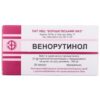
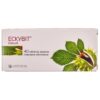
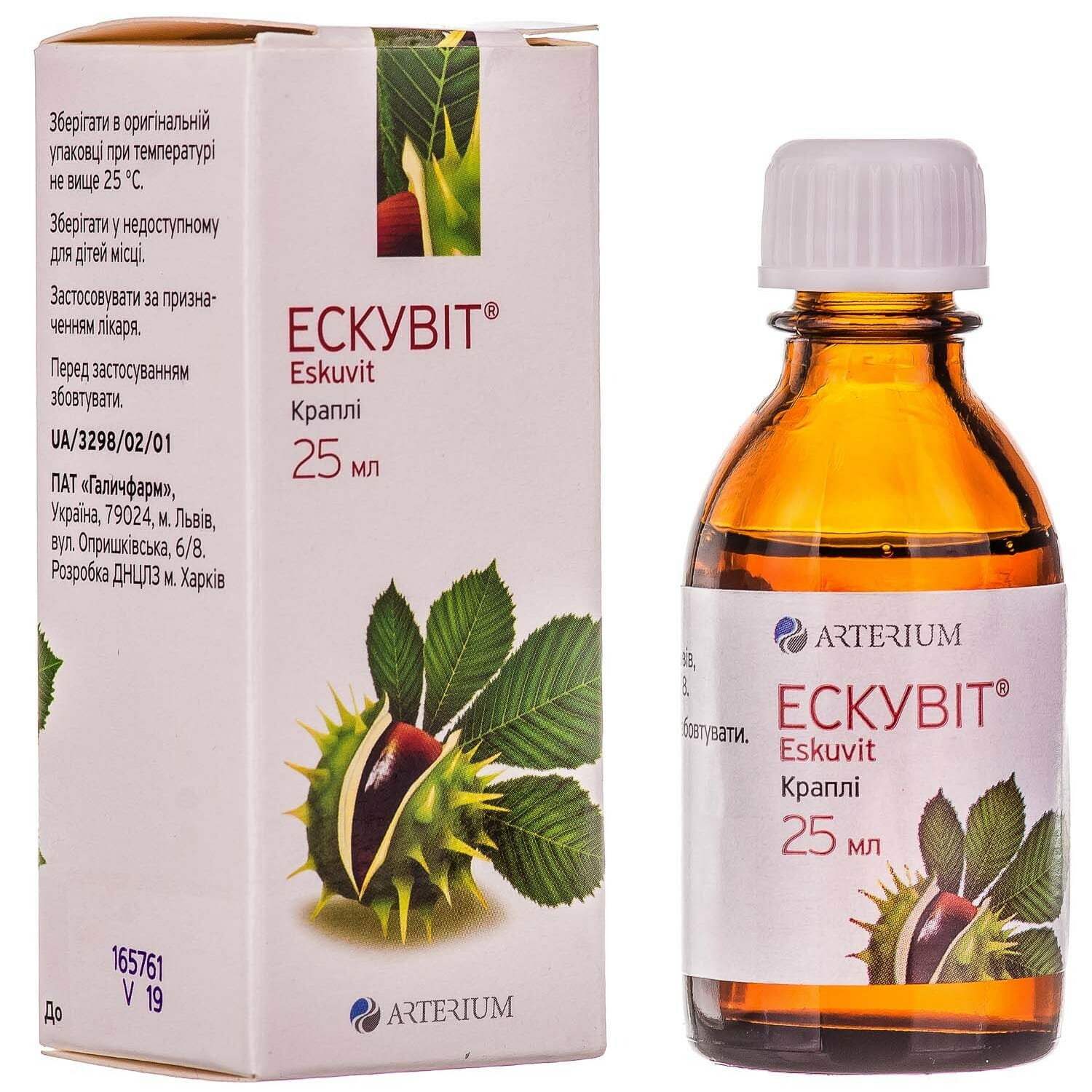
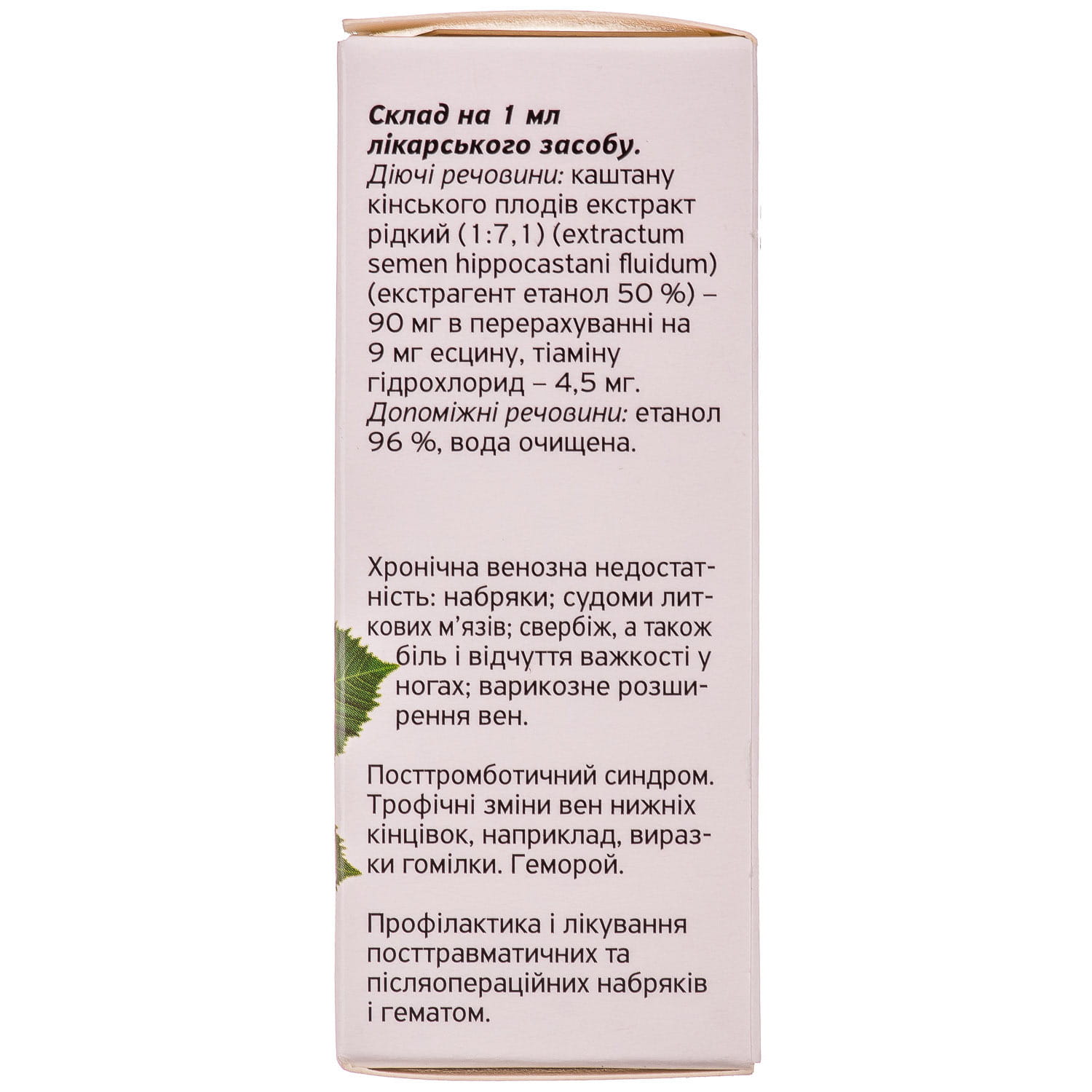
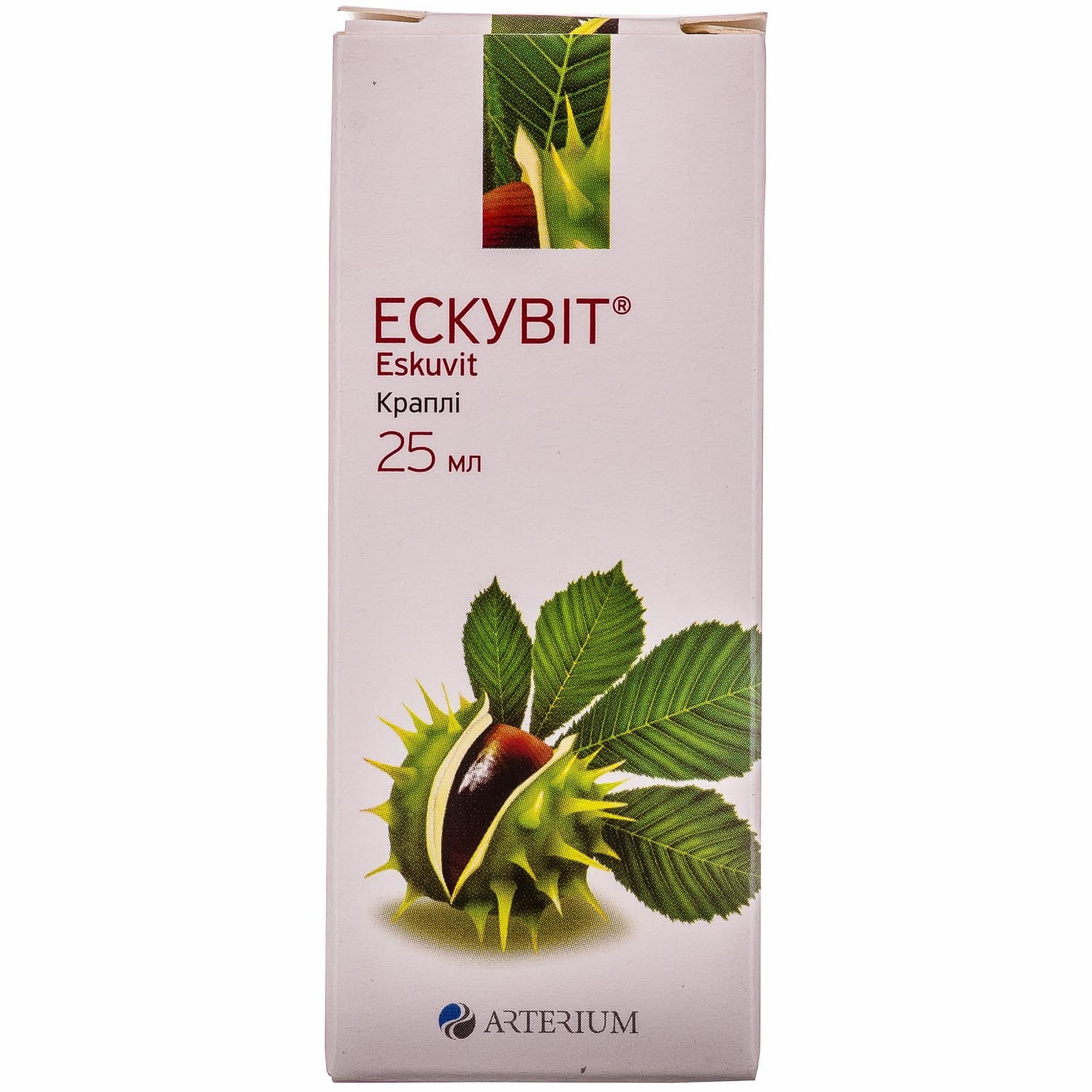
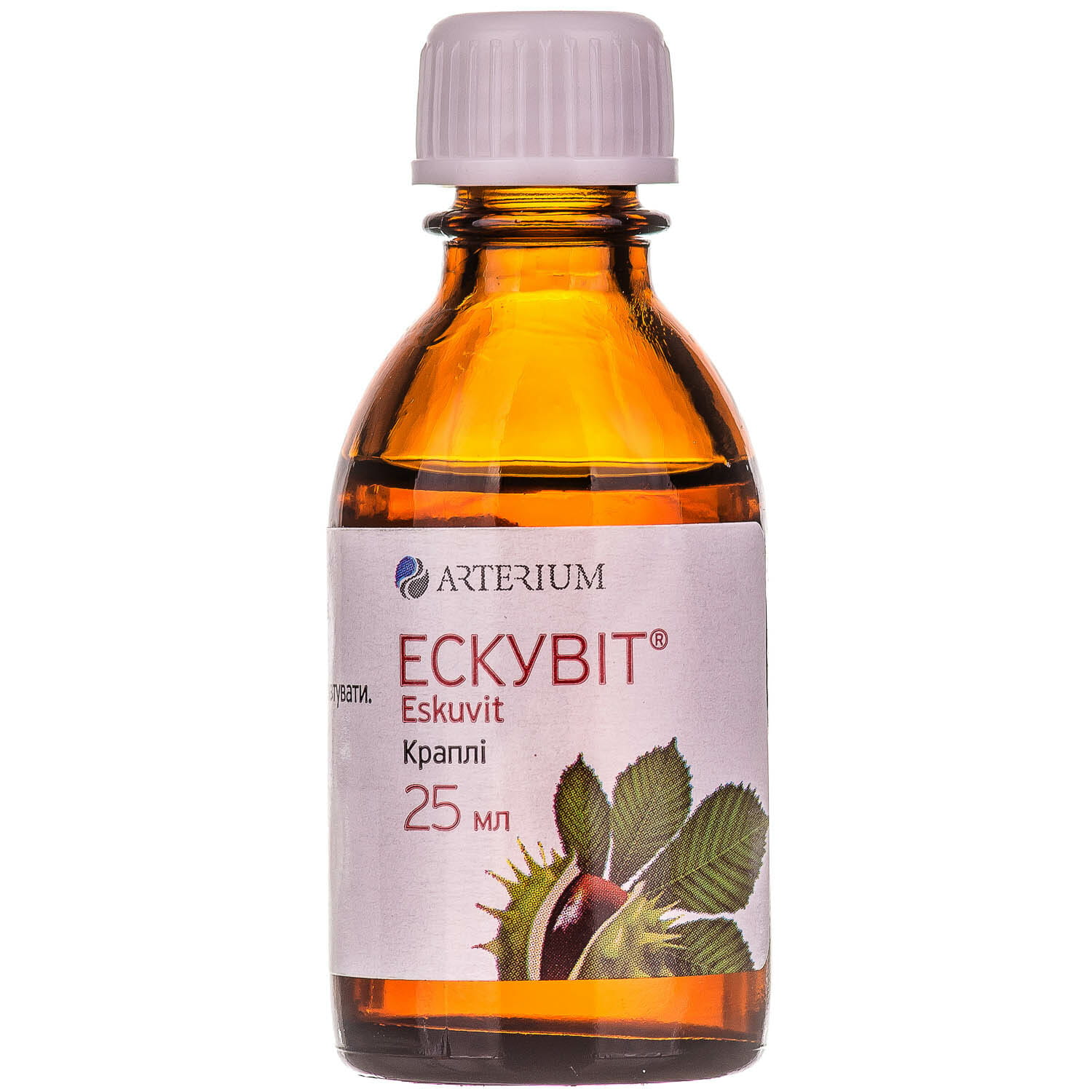

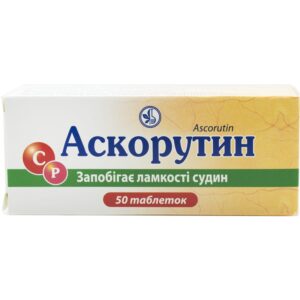

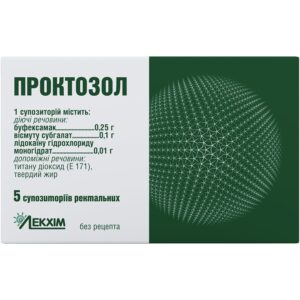
Reviews
There are no reviews yet.